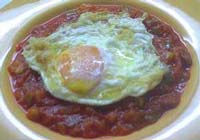With the summit almost finished, here’s a quick summary of what we came up about control-center development for 2.22 and beyond.
- There should be no distinction between a11y settings and others, a11y should just be part of the “normal” settings, like we did for the preferred applications capplet in 2.20.
- libslab (the library from gnome-main-menu used for the control-center shell) might need to be, either part of control-center itself, or a desktop/platform library. For that, it would need an API review, as well as the removal of Bonobo (used for unique application).
- Should keyboard shortcuts be part of the keyboard capplet?
- A11y keyboard in keyboard capplet?
- Proxy settings might be better placed as part of NetworkManager configuration, given NM allows now the distinction between system-wide and user-specific settings.
- about-me, in its current form, seems quite useless, so it might be a good idea to use it as a configuration point for online desktop.
- What to do with typing break? It might either be kept on the keyboard capplet, or moved to screensaver preferences, or enabled by default with a much friendlier 1st time configuration dialog.
- We’re adding a localization capplet, which will contain settings for time/date, timezone, keyboard layouts and language.
- New screen capplet containing screen resolution, screensaver and xrandr settings?
- PulseAudio integration
- Rename sound capplet to multimedia and add video device support?
- Some of the settings in control-center might be very useful if available from GDM.
Related to the discussion, and seeing all the icons that are in the systray, it would probably a good idea, now that there’s a discussion about a new panel, to have, in the new panel, separate systrays, each of which would be for specific categories (hardware, normal applications, temporary status, etc).
If anyone’s interested in participating in the discussion, please join the control-center mailing list and help us make it better.


